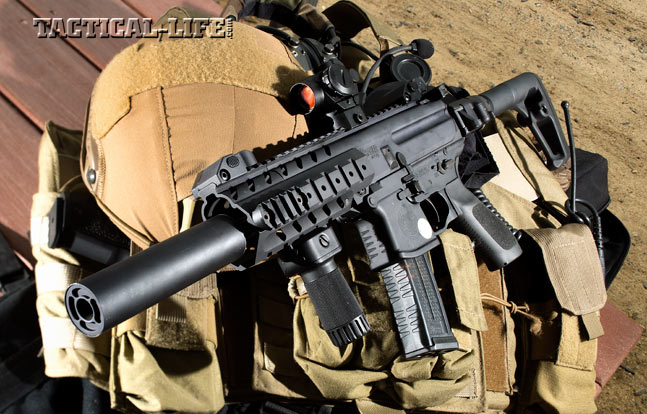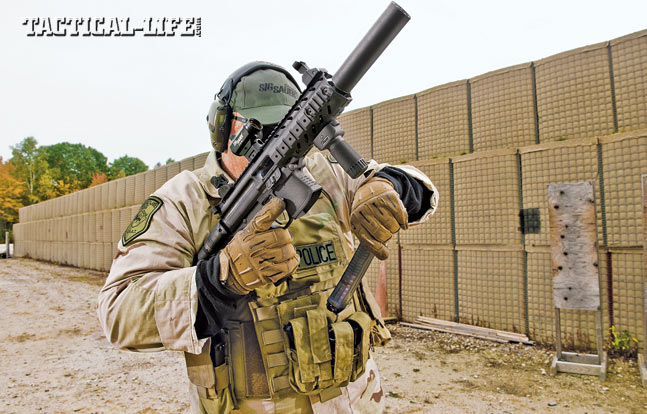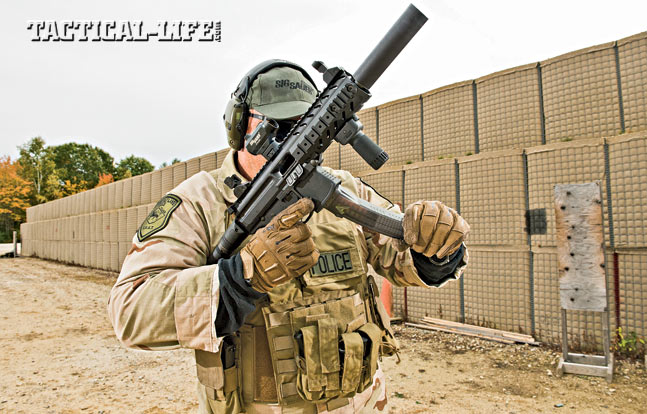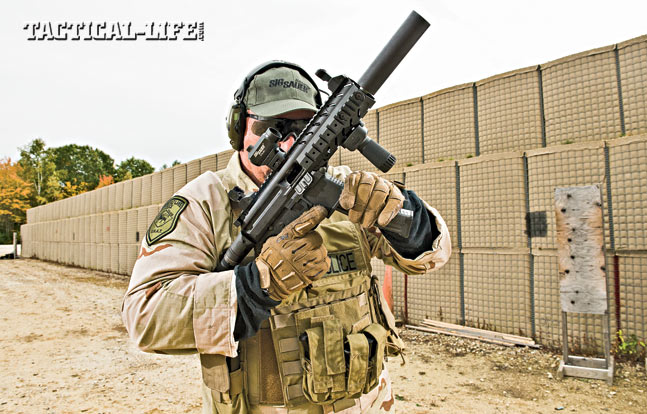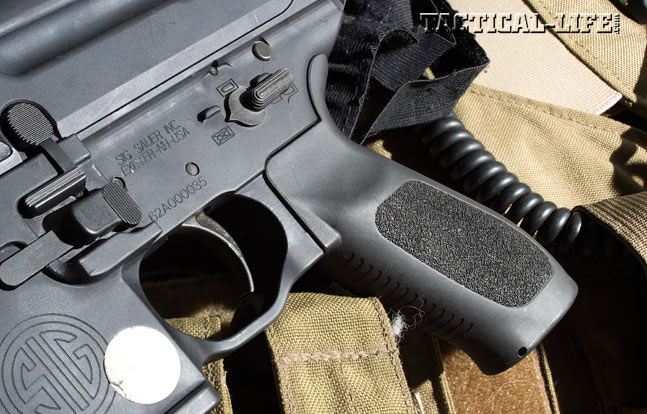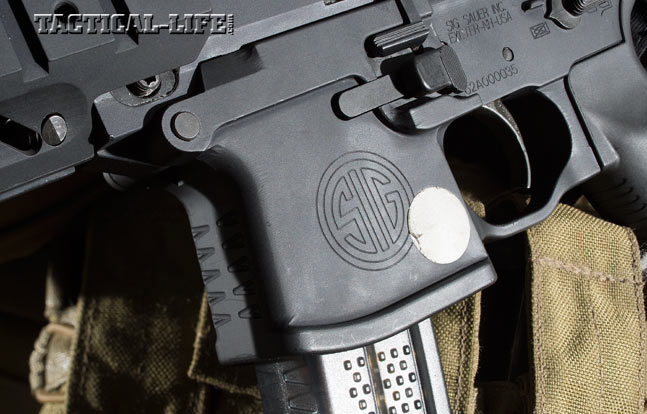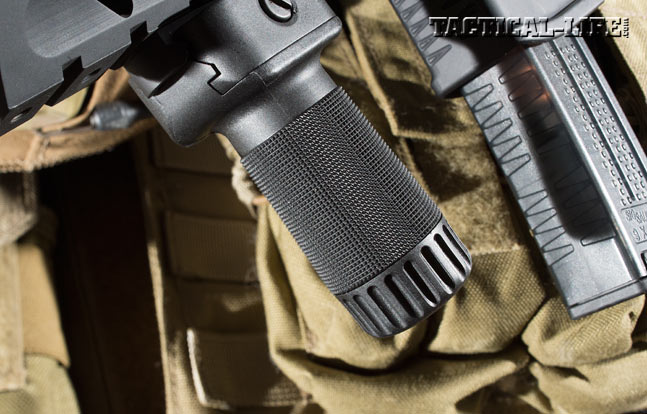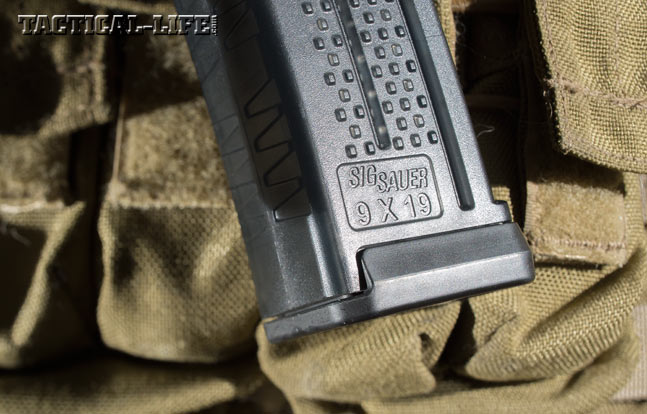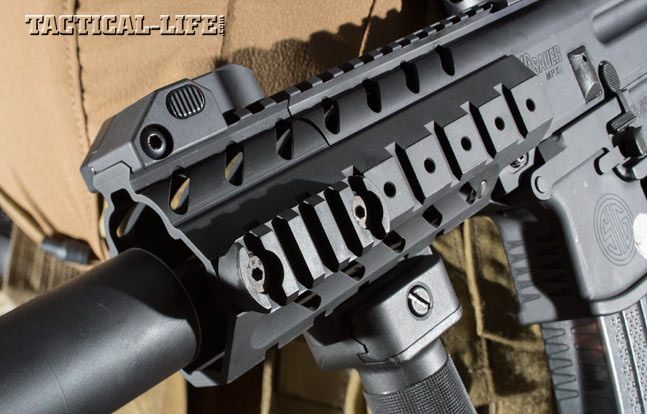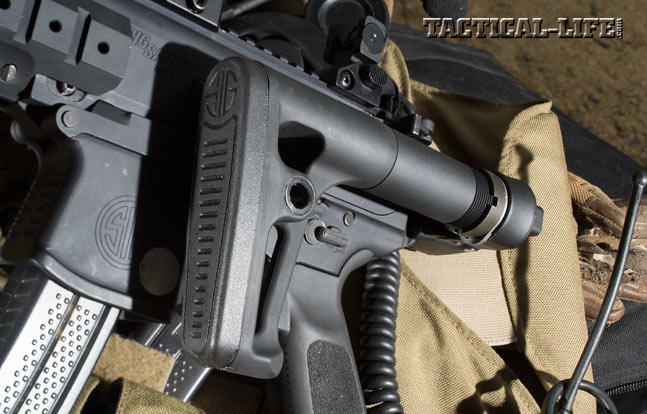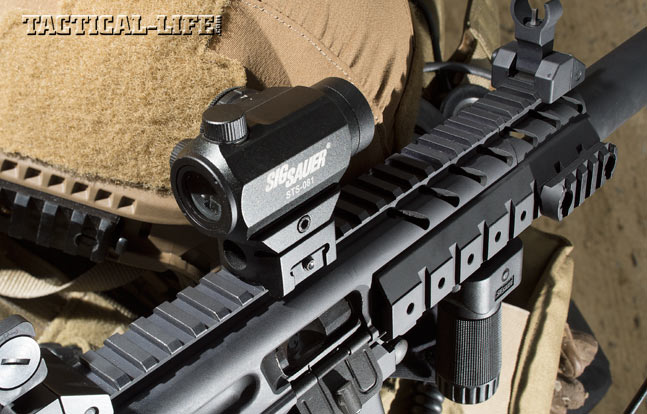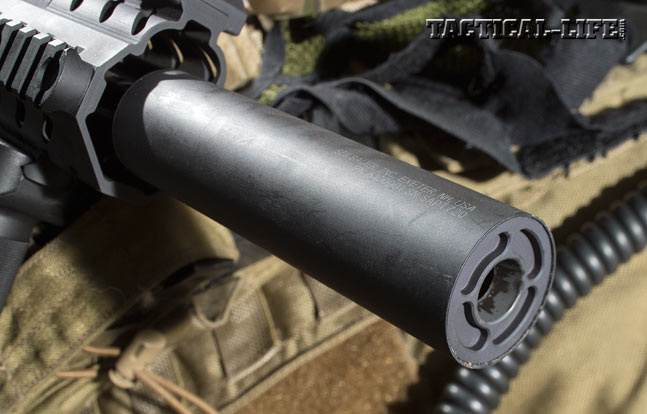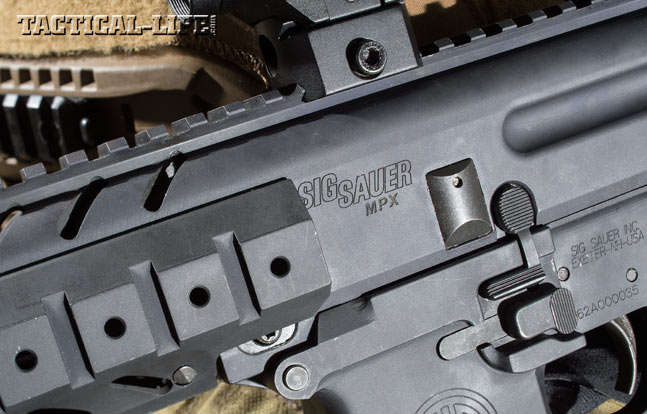One advantage of surviving over 20 years in the law enforcement tactical world is being able to see the changes in equipment, tactics and operations. The industry is constantly changing, and I’ve lived through the transitions from revolvers to semi-automatics, shotguns to rifles, and batons to less-lethal Taser devices. Often, these changes have been incredibly useful, but certainly not always. It is amazing how many “new and improved” tactics are things we did 15 years ago that failed miserably only to be reborn again.
Early on, police and tactical team gear and training experts were few—unlike today, where everyone with a website is an expert. Because of so many “expert opinions” these days, tactics and the weapons used change with ridiculous frequency. Traveling the country attending training courses has made this even clearer to me. I’ve attended a training session only to be advised those tactics were “antiquated” at another training course a week later! Even more amusing is being told a particular weapon platform is “obsolete” and has been replaced by the latest and greatest system. One of the most recently maligned is the shotgun, but next in line is the submachine gun.
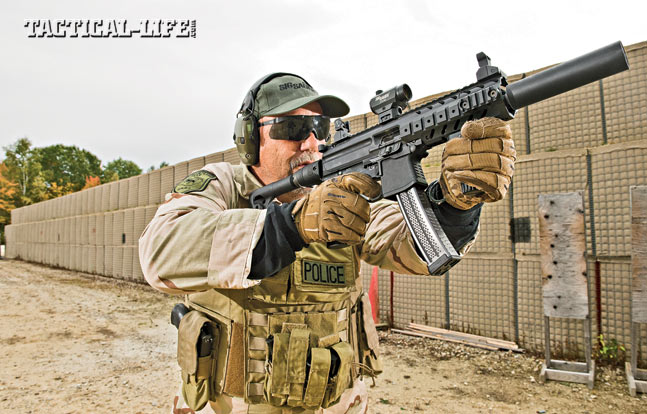
SMG Supreme
Advertisement — Continue Reading Below
Submachine guns are essentially fully automatic, shoulder-fired weapons chambered in pistol calibers. The first such weapon to replace my shotgun was a Heckler & Koch MP5. After fielding one for years (along with becoming an HK Master submachine gun instructor), it is a system for which I am truly familiar. Chambered in 9mm, it was incredibly accurate, boringly reliable and one of the handiest entry weapons ever developed. With practice, it was pretty common for me to get multi-round hits on target while moving, grouping at an inch or less. Precision shots as far away as 50 yards were almost easy. The HK MP5 remains one of the most controllable fully automatic weapons you can field. While many think it’s antiquated, I’d be just fine with one for entry missions today.
“What today’s operators really needed was a true submachine gun, from the ground up, that utilizes all of the advantages of the AR platform without its problems. It looks like Sig Sauer has just the ticket with its MPX.”
Contrary to popular belief, submachine guns remain a viable system for many different applications. Some agencies remain unconvinced of the need for rifles, or politics preclude them from fielding them. Submachine guns are a solid replacement. Truly urban teams who prefer pistol calibers still use submachine guns. Their compact size makes them a good choice for motor units or those working in close quarters. Detectives with my agency continue to use .45-caliber submachine guns with great success. Protective details often prefer pistol-caliber weapons for concealment, ease of use, efficiency and firepower, especially when suppressed. Military units with special requirements still have a need and often field pistol-caliber, shoulder-fired weapons.
While the MP5 remains the most prolific given its time in service, several other submachine guns exist today, including the HK UMP (the MP5’s replacement). Several other companies have developed similar systems, and there are always the AR-type rifles chambered in pistol calibers. Most of the newer systems are almost exotic, and the AR-based systems have proven to be less than popular for a number of reasons. What today’s operators really needed was a true submachine gun, from the ground up, that utilizes all of the advantages of the AR platform without its problems. It looks like Sig Sauer has just the ticket with its MPX.
Advertisement — Continue Reading Below
Machine Pistol X
Sig Sauer introduced the MPX in early 2013 with great effect, but the company is still in the final stages of prototyping. Significant time, effort and tens of thousands of rounds have been fired through prototype weapons, making certain it is completely vetted before it hits the market. Sig Sauer has always been committed to providing truly reliable weapons that are as proven as humanly possible before they are marketed, and the MPX is no exception. While attending a couple of firearms schools at the Sig Sauer Academy recently, the opportunity arose to get some trigger time on the latest prototype. I met with Jeff Creamer, the product management director for Sig Sauer, who provided what is the latest working prototype of the MPX along with the company’s new 9mm SIG-SD suppressor. Creamer has a very thorough knowledge of the system, and he’s also a true “gun guy,” with significant experience and a solid knowledge of a weapon’s applications.
Advertisement — Continue Reading Below
“The MPX utilizes Sig Sauer’s proven short-stroke gas piston system, configured specifically for this platform…”
The MPX is going to be made available in a number of configurations. The standard model has an 8-inch, threaded barrel. The MPX-P is configured as a pistol using the same 8-inch barrel with no stock. The MPX-SD model will utilize a 6.5-inch, ported barrel that is integrally suppressed. For those in need of a shorter version, the MPX-K will use a 4.5-inch barrel. All models will initially be available as select-fire-only weapons, and semi-auto short-barreled rifle (SBR) versions will follow. All are available with either an aluminum or carbon-fiber forend, and a folding or collapsible buttstock. The 9mm SIG-SD silencer is available for use on the threaded barrels. The standard 9mm SIG-SD is 3.9 inches long, and a longer version like the one I tested will soon be made available. Magazines are built specifically for the MPX by Lancer Systems, and they are available in 10-, 20- and 30-round capacities.
Sig Sauer’s MPX-C is going to have a specially designed muzzle brake that is permanently attached to the 6.5-inch barrel, making it a 16-inch-barreled weapon available for civilian purchase. Configured in semi-auto, it is still in the works and should hit the market as soon as it has made it through the BATFE approval process.
The MPX utilizes Sig Sauer’s proven short-stroke gas piston system, configured specifically for this platform. The use of a fully closed and locked rotating bolt enhances its operation and safety. Barrels can be changed in the field to meet varying mission requirements, and the bolt holds open on the last round. Starting out in 9mm, the MPX is easily convertible to .357 SIG and .40 S&W. A monolithic upper receiver with an integral top rail allows for the use of any common AR-compatible sighting system, including red dots and holographic sights.
Advertisement — Continue Reading Below
The MPX also utilizes AR-style controls, which makes for minimal training and transition time. Any AR-compatible trigger can also be installed. The remaining controls are also in the AR style, including the magazine and bolt releases—all are ambidextrous. A non-reciprocating charging handle is similarly placed and does not interfere with any rail-mounted accessories. While the excellent SIG516 pistol grip is used, any AR-based grip can be added. Stocks are interchangeable and can be configured based on mission needs.
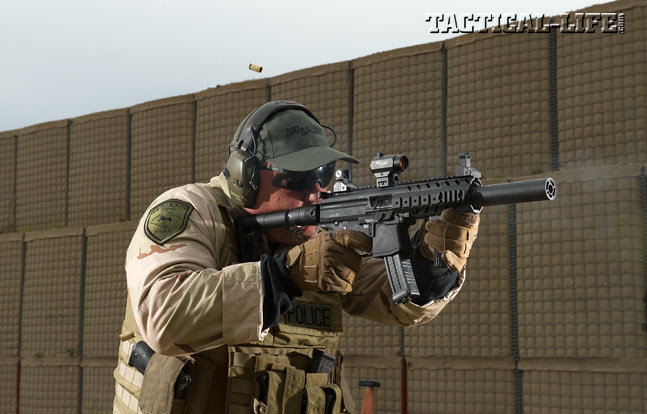
X’ing It Out
I tested a standard 9mm MPX using an 8-inch barrel and folding stock. The stock folded to the left and snapped into place nicely. You will be able to order a production gun that both folds and collapses. The prototype 9mm SIG-SD silencer was attached to the threaded barrel; it measured about 5 inches in length—just a bit longer than the standard model. For targeting, I had flip-up AR-style backup iron sights as well as a Sig Mini Red Dot Sight. Not only was this MPX a prototype, but it had seen some serious range time with an estimated 10,000-plus rounds of all types of ammunition run through it. I used both 20- and 30-round magazines. For ammunition, I used Speer 124-grain FMJ rounds. All of the testing was done in full kit, minus a helmet.
Advertisement — Continue Reading Below
“The MPX’s reliability was also excellent, especially considering that my test gun was a prototype…”
The MPX’s accuracy was stellar. After a few rounds to get used to the hold, three rounds were stacked on top of each other on the head of a silhouette steel target at roughly 40 yards. Using a similar steel target with a 4-inch swinging “hostage” plate, I was able to pretty much move the swinging portion back and forth at will. Considering that I was using practice ammo, this is about as accurate as it gets with a subgun. Shooting from roughly 20 yards off-hand, the MPX created one ever-larger hole in paper targets and a solid slab of lead on the steel targets. As expected, recoil is all but nonexistent, and the SIG-SD suppressor kept the SMG pretty much exactly where it was aimed with very little movement. Even on the move, accuracy was excellent.
One of the equalizing factors with a submachine gun is the ability to administer controlled bursts on select-fire. While possible with a rifle, it can be very difficult with an SMG. The standard during the Master Submachine Gun and Hostage Rescue school at HK was four rounds into 0.75 inches while moving and firing on full-auto. With practice, failure drills consisted of getting nine rounds on target while on the move. Mimicking this standard, shooting doubles and triples with the MPX was a breeze. With what approaches a 1,000-rpm rate of fire, the maximum number of rounds are on target in minimal time. Shooting on the move, it was equally easy to keep multiple-round bursts on target. About the only thing the MPX would not do easily was allow for “singles” on select-fire. Honestly, that is a product of the rate of fire and the AR trigger. I could do it, but not consistently—about the same as with my M16 rifles. From a practical perspective, it is less an issue with these controls, as moving back to semi-auto is pretty easy, but it is something to be aware of. For the most part, trigger presses on select-fire will be doubles or more.
This system really shines in today’s environment when it comes to reloading. The AR platform pretty much rules the tactical world in America, and the MPX uses the same basic controls. Having just completed several reloading drills in the Advanced Defensive Rifle Class, transitioning was immediate. Whatever reloading protocol you currently use with your carbine will be exactly the same. Whether loading on an open bolt after the last round or completing tactical reloads, it was smooth, fast and required no learning curve.
Advertisement — Continue Reading Below
The MPX’s reliability was also excellent, especially considering that my test gun was a prototype. Ejection was consistent and reliable. Magazines insert easily and fit in my M4 magazine pouches. Sized very similarly to MP5 magazines, my guess is any of those would work very well.
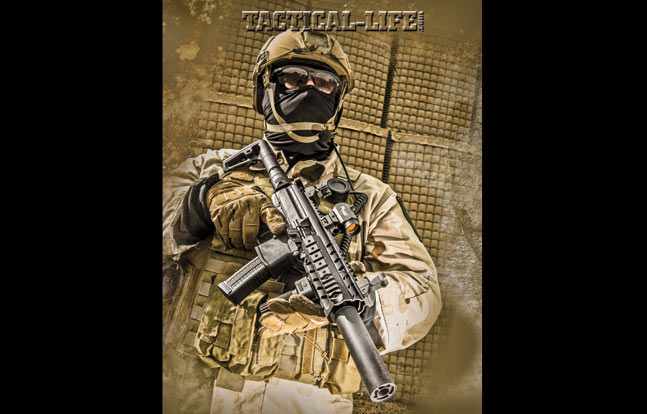
AR/SMG Hybrid
There are a ton of things to like here—most of all is the MPX’s cross-compatibility with the AR platform. It’s critical to remember that many officers these days have never seen an MP5 outside of a video game. Many operators have only run one system (an AR), and the MPX makes transition training almost seamless.
Advertisement — Continue Reading Below
“Sig Sauer really has something with the MPX, especially for those units looking for a rock-solid submachine gun…”
Suppressed, the MPX is almost completely ear safe (unless you’re shooting steel plates), and it’s easily usable on operations without hearing protection. Even heated up during sustained fire, there was no visible shift in point of impact. Because of the threaded barrel, the suppressor is easy to remove, making for a really compact package. The 13.5×1 LH thread pitch keeps the suppressor from coming loose under sustained automatic fire.
The MPX’s folding stock made it possible to start from a concealed position one might use in a protective detail and move smoothly and easily to well-aimed shoulder fire—even on the move.
Sig Sauer really has something with the MPX, especially for those units looking for a rock-solid submachine gun. Chambered in 9mm, it is an excellent weapon, and moving to .357 SIG will add some serious ballistics to the platform. Given how well the prototype worked, I am looking forward to the chance to work with the first production guns.
Advertisement — Continue Reading Below
